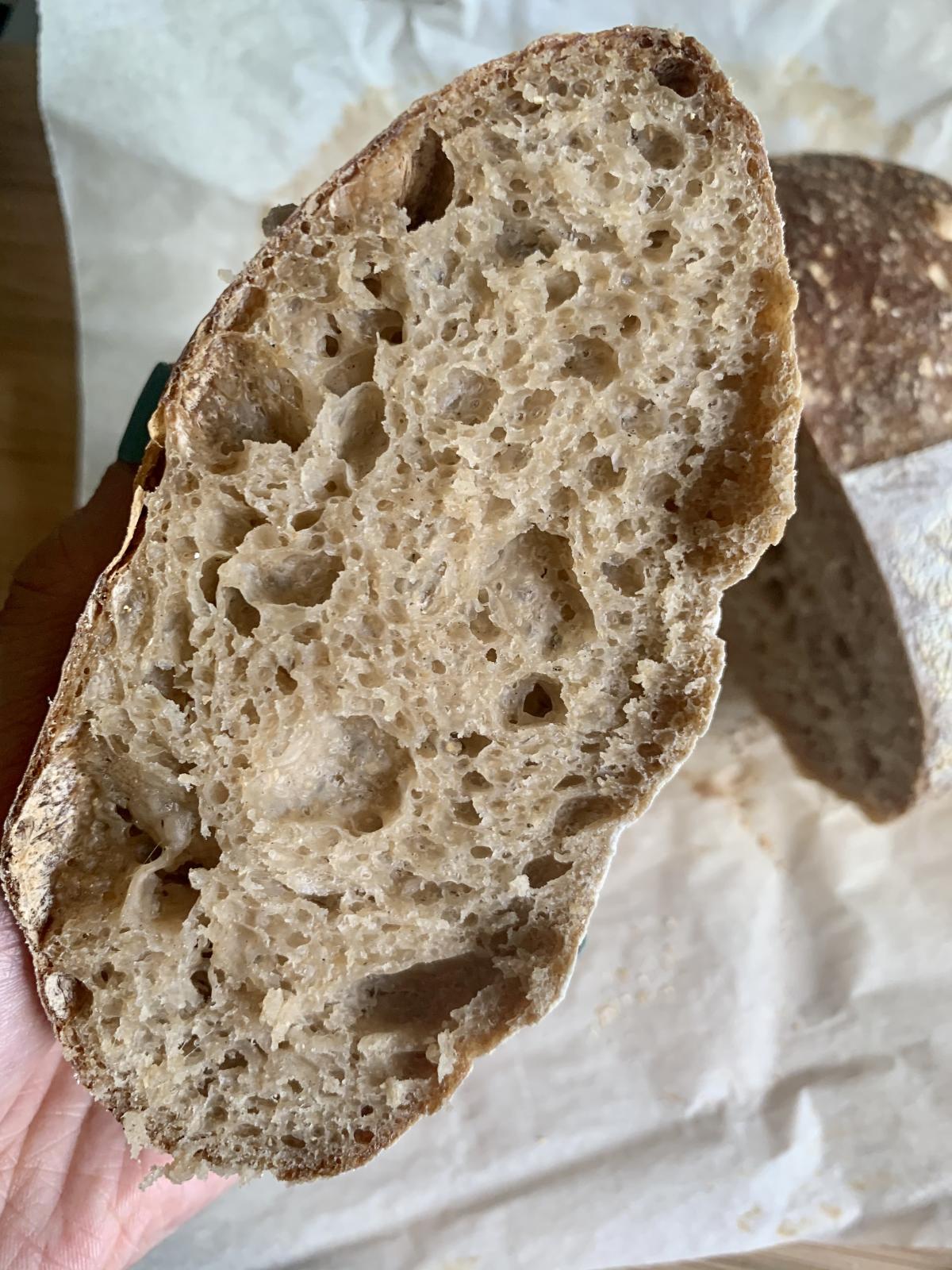
Help with gummy texture

Hi all! Hoping to get some insight as how to to solve the weird texture in my sourdough - it’s this tacky, gummy crumb that seems to happen in all my sourdough no matter if I change up recipe or fermentation time.
I’ve tried changing up the recipes
- bread flour: ranging from bread flours 12-13% protein
- whole-wheat whole grain - 10-25%
- hydration- ranging from 60-75%
- salt 2%
- starter - 4 months old fed twice daily - fed the night before 1:2:2 (50% rye + 50%bread flour) and for the actual levain used in the bread I feed it 1:2:2 (100% bread flour or mix in 10% ww flour)
I’ve made like 6 loafs with varying taste from the hours left to bulk ferment but the gummy texture prevails
general method
feed starter (1:2:2) - used around it peak, not quite tripled but definitely more than doubled in volume 4-5 hours after
autolyse 1.5 hours
Mix starter in by hand, 5 mins mixing
30 mins later, Salt in, 3-5 mins of mixing
30 mins interval - bench fold, stretch and fold, 4 coil foils
total bulk fermentation - tried a range from 4-6 hours at 28 degrees Celsius room temperature (tried a range of growth btw 40% to 100%)
at the end of bulk there are visible air pockets, dough is manageable not too sticky and can be shaped
Into a banneton and into the fridge for about 12 hours.
It goes straight from the fridge, scored, into an oven 250 degrees with steam covered with Pyrex bowl for 20 mins and 210 degrees uncovered. There’s no oven spring too :(
troubleshooting the issue
ive tried changing the flour, and have made commercially yeasted bread with the same flour and didn’t have issues there
For hydration, even if I do reduce it to 60%, the gumminess is still present
So I’m suspecting something is wrong with my starter?
i had fed it 100% dark rye previously as it would make a strong starter? But rye supposedly can cause some gumminess so I switched to only bread flour or sometimes with a little bit of whole wheat mixed in for the levain.
Any suggestions on what else I could try would be so helpful!


Then learn it. Gummy means too much water in the finished product.
Water can be removed from the finished product by longer and/or hotter baking, or by lower hydration in the dough.
In my opinion many people on this site over emphasize high hydration. It causes more problems than it provides in benefits. Your loaf looks a bit undercooked also.
You are changing too many variables.
Try 65% hydration at 260 Celsius for approx 45-50 minutes for a 500g flour weight dough. Post your results here. You can then make one small change at a time to achieve your goals.
There's gummy, like 100% rye bread gummy if cut less than 24 hours after baking, which coats the knife.
Then there's gummy, which creates small shreds and a light film on the knife.
And sometimes there's temporary gumminess that only occurs when the bread is cut before it has cooled to room temperature.
High-hydration breads sometimes have a crumb that is described as "custardy". It doesn't necessarily stick to the knife but can feel as though it is underbaked even when fully baked.
You don't mention the internal temperature of the bread. Have you checked that? For a lean dough like your formula, the internal temperature of the loaf should be more than 95C to be fully baked.
Paul
Holymolely, you mention that you've used the same flour with success with commercial yeast. Have you tried using your current recipe and adapting it to use commercial yeast instead of your starter?
I ask this because, discounting the obvious problem of under baking, I usually think in terms of accelerated enzymatic activity with a loaf that has a gummy texture. Ruling out your starter by using commercial yeast could help in trying to solve the problem.
Dave
Hi Holymoley,
First, I love your username!
Second, the gumminess problem might stem from the amount of rye flour. I might suggest increasing your starting oven temperature about 10-15 degrees so that the internal temperature of your loaf reaches the amylaze kill point sooner. After 10 minutes you would decrease the temperature to your normal level. I agree with my other colleagues too that a more thorough bake will help. Aside from taking the internal temperature with a thermometer (190-200F), I like to pick the loaf up and feel its lightness. You can also weigh the finished loaf on a scale; it should be 10-15% the weight of the scaled out dough. I hope some of this is helpful.
Best regards,
Stephen
Hi Holymoley,
First, I love your username!
Second, the gumminess problem might stem from the amount of rye flour. I might suggest increasing your starting oven temperature about 10-15 degrees so that the internal temperature of your loaf reaches the amylaze kill point sooner. After 10 minutes you would decrease the temperature to your normal level. I agree with my other colleagues too that a more thorough bake will help. Aside from taking the internal temperature with a thermometer (190-200F), I like to pick the loaf up and feel its lightness. You can also weigh the finished loaf on a scale; it should be 10-15% the weight of the scale out dough. I hope some of this is helpful.
Best regards,
Stephen